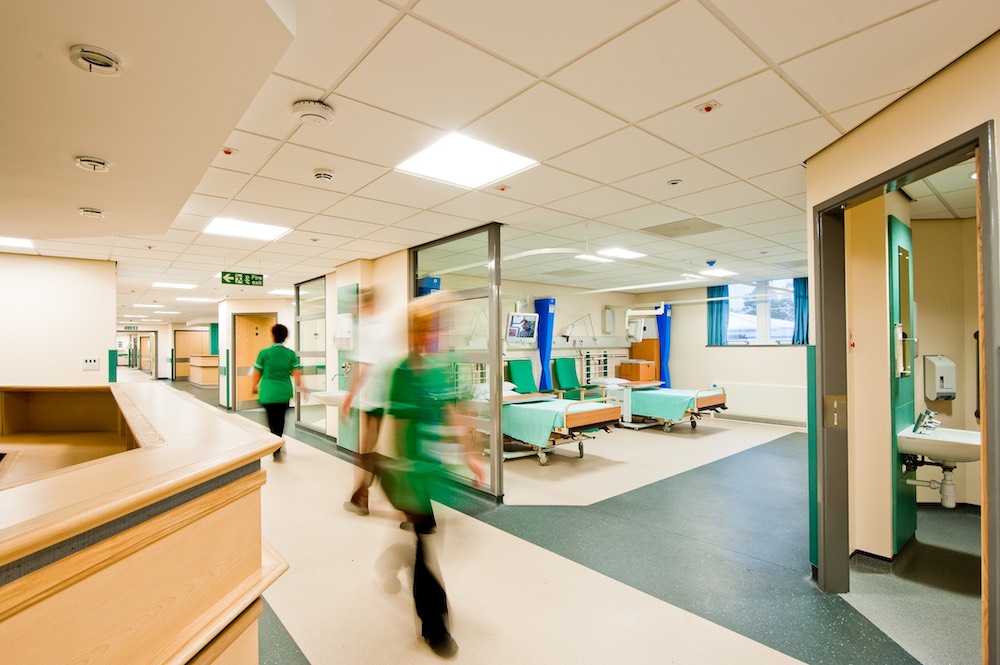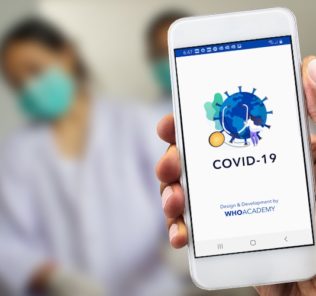How Simulation Centers Can Expand Use and Support Innovation
Simulation centers often experience periods of low use while contending with variable funding, and healthcare innovators often experience challenges in gathering information about the usability of novel devices. While both scenarios are known to occur, the increased prevalence of healthcare simulation use across medical simulation centers has prompted the need to overcome such barriers. This HealthySimulation.com article details how simulation centers can expand their use to support healthcare innovation. Author, Efrem Violato Ph.D., Research Associate at Northern Alberta Institute of Technology, Centre for Advanced Medical Simulation, also presents an outline of how the Innovator and SC must meet to present the opportunity for a reciprocal relationship along with a discussion of both considerations and challenges.
Overall, simulation adds value to education and improves patient care. Beyond the direct effect on Healthcare Professionals (HCP) skills and knowledge, clinical simulation improves patient care in other ways, such as through usability testing for health technologies and devices. Usability testing is the evaluation of a product’s ability, in the intended context of use, to be used in an effective and efficient manner, learned with ease by the user, and produce user satisfaction.
Health tech and innovation have become dynamic with new devices continually emerging and digital health technologies, or Software as a Medical Device (SaMD), seeing rapid and disruptive growth. With the growth of SaMD and physical devices, more Innovators than ever before are trying to bring products to market. Generally, technologies are developed by large Multinational Enterprises (MNE, e.g., Johnson & Johnson) or Innovator-driven Small-Medium Enterprises (SME) where the main stakeholders are often a researcher or a researcher-entrepreneur pairing.
Sponsored Content:
Health innovation is challenging and progressing from idea to regulatory approval to market uptake can be a lengthy and complex process. While MNE’s have many resources, accessing the necessary environments and end-users to uncover problems, discover opportunities, and learn about end-user behavior to advance device design and development can be difficult. This creates a gap in the product development journey.
While Innovators and SMEs lack access to environments and end-users, Simulation Centres (SCs) often have excess capacity, particularly during the summer months. While having excess capacity, the amount of funding and the funding models for SCs is variable with competition within academic or healthcare institutions for funding and resources. This excess capacity presents the opportunity to generate funds and ensure sustainability and delivery of the best healthcare simulation education possible.
Solution
Offering space and expertise to Innovators to conduct usability testing and gather data to improve device design presents a mutually beneficial solution. Usability testing is essential for device development, physical or SaMD, and is another way SCs can provide a critical service to improve patient safety, care, and outcomes.
Sponsored Content:
Innovators are always pushing their devices forward and don’t work on an academic schedule – meaning SCs can generate revenue by filling time when scheduling is light (e.g., summers, weekends, and evenings). While SCs vary in size and scope, they most likely already possess the physical and human resources to meet Innovators’ needs without incurring overhead costs.
Generally, the ideal device for support is in the Technology Readiness Level of 4-6. This means the device is ready to be put in the hands of end-users in a realistic setting to gain feedback to allow for re-design. Devices at this level are not ready for Summative Testing, Investigational Testing Authorization (Canada) or Investigational Device Exemption (USA), and clinical trials. For an SC considering supporting Innovators, there are multiple considerations and challenges; a few are enumerated in the next two sections. While this service can also be offered to MNEs, the present focus is on SMEs/Innovators.
Considerations
Staff: Considering the capacity of the SC staff is necessary, including hours, scheduling, experience and knowledge in designing and conducting simulation, and knowledge of testing and research methods. Expert-level knowledge in designing and conducting simulation is necessary, though if institutional access to expertise in testing and research is available (particularly in Human Factors and Ergonomics), and not seen as necessary knowledge for the SC staff.
Buy In: Medical simulation for usability testing will be a different process than simulation for HCP, therefore, SC staff buy-in is important. Consider if staff are willing to develop new processes and procedures, adapt existing ones, and expand their scope of knowledge and experience. Buy-in will also be necessary from the broader institution where they operate, various levels of approval will likely be required.
Upcoming HealthySimulation.com Webinar:
How Simulation Centers Can Expand Use and Support Healthcare Innovation (Sep 20th, 9 AM PDT, UTC-7)
Presented by Efrem Violato, Ph.D., this webinar will detail how Simulation Centres can expand their use to support healthcare innovation. This webinar will also present the importance of simulation for usability testing and how both Innovator and Simulation Centre needs can be met to ultimately improve patient care. Some of the major considerations and challenges when establishing this new service will be discussed along with potential future directions for simulation and usability testing in the virtual space.
Setting: Location and primary users are important. Being in a hospital, a major research university, a polytechnic institution, or another setting will influence resources, intra-institutional integration/support, and access to end-users. Support for expanding an offering will also vary based on broader institutional values and objectives.
Capabilities: What is the SC’s focus, size, and what can users create? Innovators will be looking for anything from home care to hospital settings. While being flexible and creative, knowing limitations is necessary.
Ecosystem Development: Expanding service offerings are comparable to growing a business; effort and engagement are needed to bring people in the door. Relatedly, Innovators must consider their geographic location. The health-tech ecosystem at a national (e.g., USA vs Canada vs Europe) and local level (e.g., Silicon Valley/Toronto vs Edmonton/Cleveland) will be different in terms of development and capital and if Innovators are coming from post-secondary spinouts, private companies, or a combination of the two. Relatedly, consider if local or national medical device design companies (e.g., Sterling Medical Devices) exist and if/how they can work with them.
Monetary Support: If hiring staff, increasing time dedication, creating marketing materials, or purchasing equipment is necessary, local or national grant funding may be available to help expand an offering.
Challenges
Awareness: Many outside and within an institution, including those in health tech, will not know the SC exists. Building a presence in the ecosystem will be required. This will mean educating, making connections with people in the health-tech space, going to the local tech and ecosystem events, and leveraging the network. Legwork is needed to establish a place in the ecosystem.
Knowledge: Providing education on what healthcare simulation is and the associated inner workings will be necessary. “Simulation” has many meanings depending on the subject area, frequently people in health tech don’t know what healthcare simulation is, and those developing SaMD often don’t have a healthcare background. When working with Innovators, there may be the need to lead all aspects of the healthcare simulation design, guiding them through the process and identifying what is necessary/unnecessary and possible/impractical. When discussing simulation design, include Sim Techs, Educators, and someone with knowledge in research methods. They will also need to assist in selecting measures and data collection.
Value: Explaining the value of healthcare simulation for device development and that spending money on simulation will save money in the long run by accelerating device development through identifying design/use issues earlier and potential lack of market need. Usability Testing through clinical simulation is extremely helpful for improving design and is required by FDA/Health Canada for regulatory approval. Innovators are often unaware of this, thinking that taking a device from the lab directly into the clinical environment to test or offer for purchase is possible. Procurement varies depending on the country and healthcare system but evidence from simulation improves the likelihood of market uptake.
End-users: Providing end-users to test the device is necessary. This means accessing a wide range of professions and experience levels. Learners are a viable option as novice end-users, but accessing HCPs with high levels of experience, in particular physicians and nurses is challenging, and payment is necessary. Building a “roster” of HCPs willing to participate in testing, initially through personal connections, is a viable option.
Pricing: Establishing a pricing model is necessary, however, publicly available pricing models to copy are unavailable. Innovators themselves will likely not have any idea what simulation should cost, though in a subsidy-heavy ecosystem they may expect free service. An academic pricing model of +10% can be a good place to start, leaving room to increase based on demand.
Conclusion
While there are many considerations and challenges to expanding the offering of an SC, remembering considerable potential exists for an SC to help Innovators and the local economy, generate additional revenue, and fulfill an essential role beyond education and training is important. The first step is expanding perceptions of how to use an SC.
Learn more about How Simulation Centres Can Expand Use and Support Innovation!
Today’s article was guest authored by Efrem Violato Ph.D., Research Associate at Northern Alberta Institute of Technology, Centre for Advanced Medical Simulation.
Have a story to share with the global healthcare simulation community? Submit your simulation news and resources here!
Sponsored Content:















